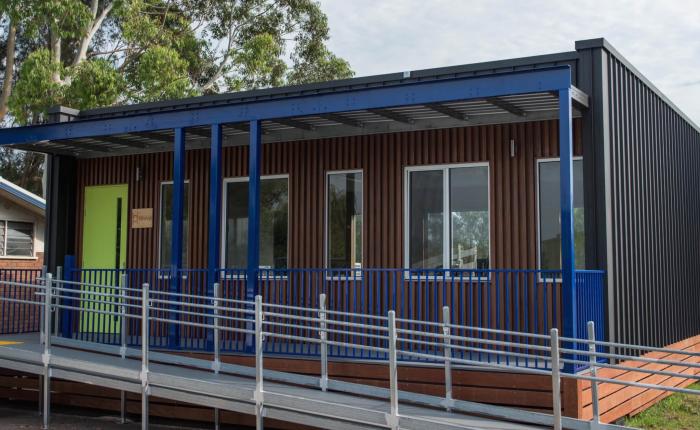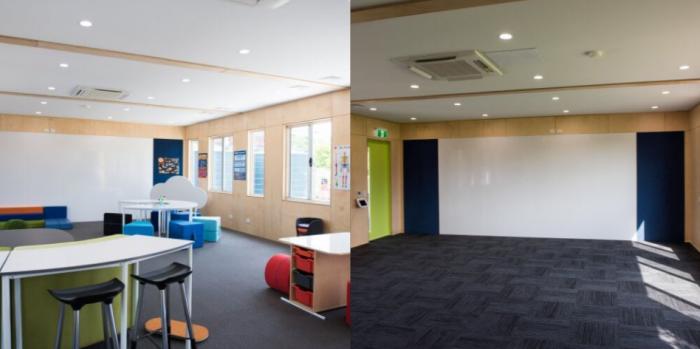
Image: Hivve
Some lucky Australian school-age students have been kicking off their year in a comfy, high-tech solar powered classroom.
The Australian Renewable Energy Agency (ARENA) announced today it had stumped up funds for a pilot of smart, modular solar powered classrooms called Hivve.
Hivve Technology Pty Ltd will be provided with $368,115 in funding from ARENA for the project that involves two classrooms – one situated at St Christopher’s Catholic Primary School in Holsworthy in Sydney’s south-west and the other at Dapto High School.
Hivve classrooms feature solar panels, real time energy and carbon dioxide metering and systems to actively manage energy demands and indoor environment quality. According to Hivve, advanced temperature and fresh air management systems keep the environment “just right”, assisting in improving academic performance.
Hivve states the classroom’s design incorporates environmentally sustainable elements and materials. A special focus has been put on natural light and cross flow ventilation, plus the classrooms also feature glazing and shade elements, insulation, energy efficient lighting, and a mixed mode cooling and heating system.
It certainly looks a lot more comfortable than the un-insulated demountable I spent Grade 5 in; the air-conditioning of which consisted of a noisy and ineffective fan stuck in a corner.
There’s no mention of energy storage being a part of the Hivve system.
ARENA says a conventional air-conditioned classroom can consume on average 3,800 kilowatt-hours of electricity annually, but a HIVVE classroom is capable of an estimated net energy generation of 7,600 KWh per year – meaning it will generate enough electricity to power the equivalent of another two classrooms.
As well as producing clean electricity, the Hivve classrooms provide educational opportunities.
“This is a great way to get the next generation involved in renewables at an early age and educate them as to what the positive benefits will be as Australia continues its shift towards a renewable energy future,” stated ARENA CEO Ivor Frischknecht.
“The success of the Hivve project could lead to a nation-wide adoption of the modular classrooms, reducing reliance on the grid and even providing a significant amount of electricity back to the NEM.”
The pilot follows successful testing of a prototype building in a controlled environment. The Hivve classrooms at the two schools will be monitored and evaluated over a year.
Many Australian schools have already gone solar as a result of the government-funded National Schools Solar program, which provided $217 million to 5,300 schools to install solar panels and other water/energy efficiency measures. A total of 4,897 schools installed solar1 under the NSSP.
While the NSSP program ended in June 2013, schools can still take advantage of Australia’s major solar subsidy, which can reduce the up-front cost of acquiring a solar power system by many thousands of dollars. The cost of solar panels has also dropped considerably since the NSSP was active.
Footnotes
- The National Solar Schools Program Evaluation Report can be viewed here (PDF). ↩


 RSS - Posts
RSS - Posts



Speak Your Mind